When you think of classic condiments, these two likely come to mind. In the debate of ketchup vs. mustard, there are some key things to consider when adding one of these sauces to any dish or meal. While their colors are a significant differentiator, they can also be used together in several recipes. Add some tomato tang or mustard-seed spice to your meals!
Keep on reading and we'll look at the process for making each of these sauces as well as their origins in cooking and use in recipes. You will learn about some of the ways you can use them as a sauce or condiment to classic meals (hotdogs? meatloaf?) and understand more about their flavors in the great ketchup vs. mustard debate.
Ketchup vs. Mustard: What is The Difference?
The key difference between ketchup and mustard is that ketchup is made from tomato paste while mustard is made with mustard seeds. The result is a sweet and tangy flavor for ketchup versus mustard often being pungent and bitter. However, mustard can also have a great variety of flavors with some being sweet or spicy.
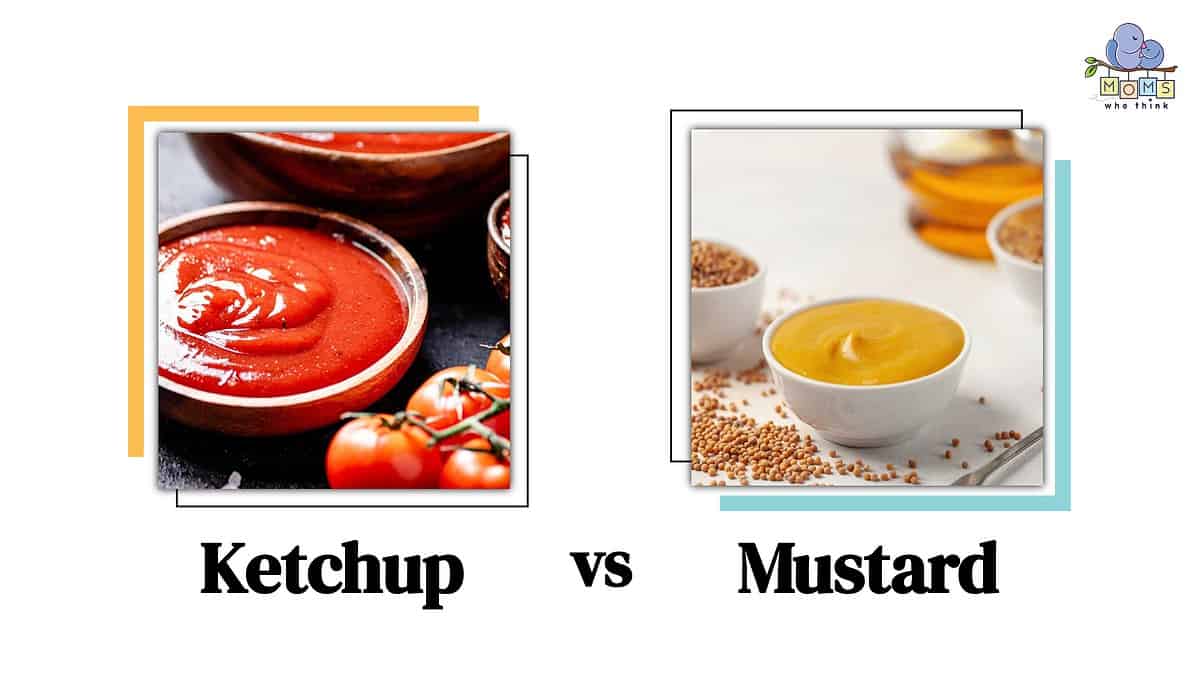
©
What is Ketchup?
Ketchup comes in a variety of forms, ranging from organic brands to highly artificial and sugary variations. The base ingredients are tomatoes, salt, sugar, and vinegar. Some recipes for ketchup include other spices like allspice, ginger, cinnamon, or coriander to create a balance of sweet and spicier flavorings. Some more uncommon ketchup types include curry-based ketchup and fruit ketchup. There's even a tomatillo ketchup recipe!
History and Origin
According to History.com, ketchup has roots as far back as 300 BC. Tomatoes weren't brought to England from South America until the 1500s, but far earlier than that, areas of Southern China, Indonesia, and the Philippines were already making versions of the sauce. They used fish entrails, meat byproducts, and soybeans. It was the trade routes that brought a taste for the tangy condiment to the European and English traders. While the official ketchup sauce wasn't invented until 1812 by James Mease, a Philadelphia scientist, throughout the previous century, people were using versions of this sauce in recipes. Salt and vinegar were the main preserving components and all kinds of veggies and even fruits were included in large batches that could come out sweet, salty, or spicy!
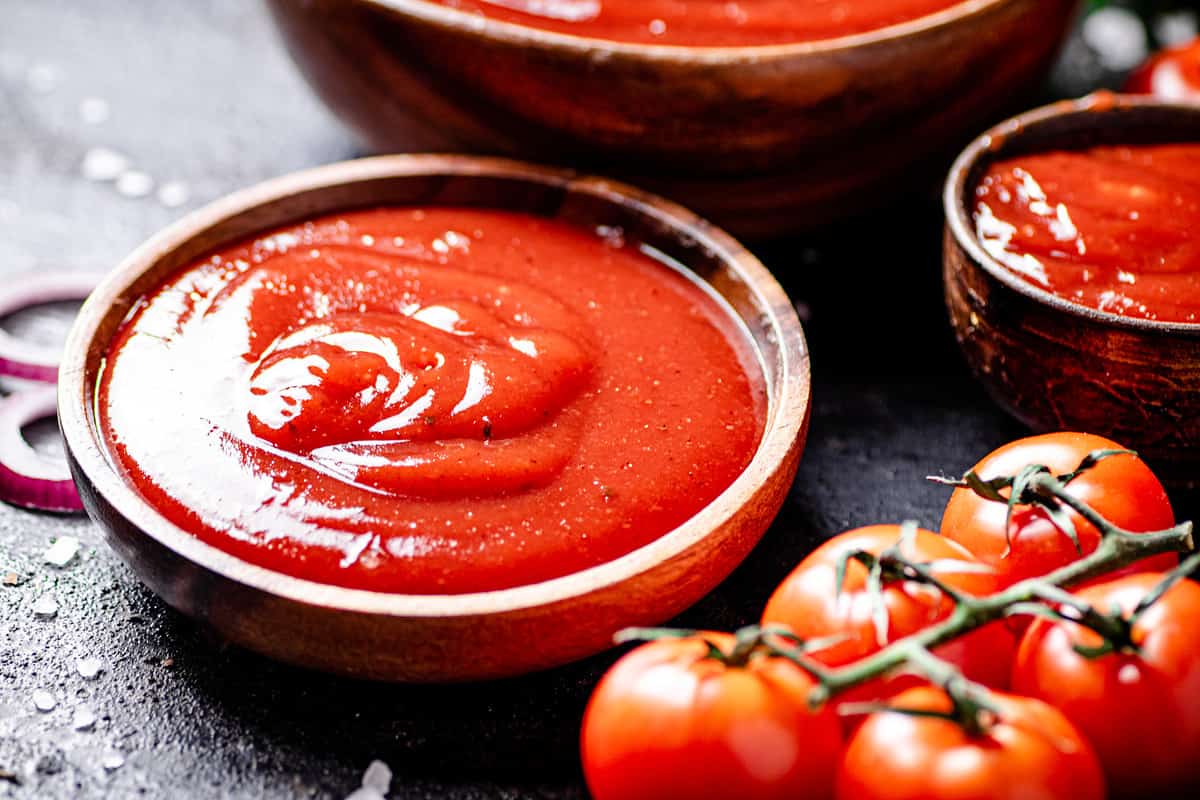
©iStock.com/Olesia Shadrina
How is Ketchup Made?
Now that you know some of the base ingredients, let's see how exactly they are combined. The most popular brand of ketchup is Heinz, so we'll take a look at that process. Mix tomato paste with water to get a smooth consistency. Then go in the preservatives and spices. Into the mixture goes the brine, vinegar, sugar, and whatever spices fit the needs of the recipe. The salt and vinegar are what give ketchup its longevity in your fridge or cabinet!
Popular Uses
The most classic use of ketchup is in the iconic hot dog and bun combination. Food and Wine Magazine recommends its use in glazes, stews, meatloaves, and shrimp cocktail sauce. You can also use it as the perfect dipping sauce for all things fried, and other dressing combos.
Nutritional Value of Ketchup vs Mustard
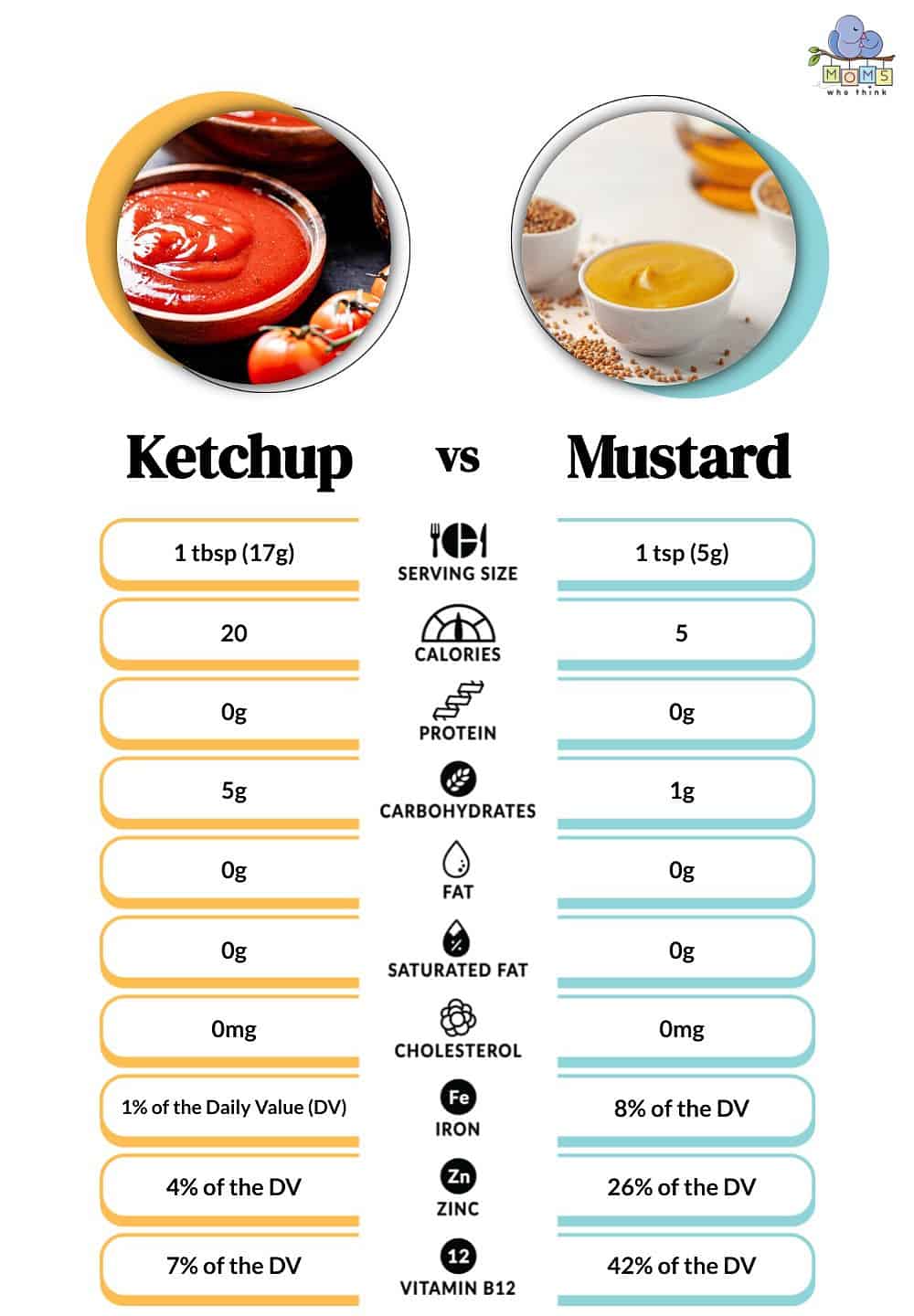
©
With the base of a vegetable, ketchup is a relatively nutritious condiment and is usually only used in small doses. 1 tablespoon of ketchup has about 20 calories, 4.5 grams of carbohydrates, and less than a gram of fiber, protein, and fat content. The ingredients that can define the nutritional value of ketchup are the sugar and sodium content. These vary depending on the brand.
Some of the added health benefits of ketchup are possibly due to the presence of Lycopene, a non-provitamin A carotenoid. This is what colors tomatoes in those beautiful shades of red and pink that are present in tomatoes and other fruits. Lycopene is suspected to have antioxidants as well as to provide brain support, promote heart health, and several other added benefits.
The mustard plant as a whole has lots of nutritional value and health benefits. The condiment contains very few calories and a hearty mixture of iron, calcium, selenium, and phosphorus vitamins and minerals. According to Healthline, mustard seeds contain glucosinolates which are sulfur-containing compounds. These compounds act as antioxidants while the isothiocyanate and sinigrin compounds also present in the seeds can combat cancer cell growth and produce anti-inflammatory, anti-bacterial, anti-fungal, and other healing benefits.
What is Mustard?
Mustard is a condiment with the ground-up seeds of mustard plants. When combined with vinegar, spices and herbs, and other base ingredients, it forms a delicious paste. There are a few types of mustard seeds that contribute to the different tastes in types of mustard. Take your pick of honey mustard, dijon mustard, yellow mustard, spicy brown mustard, and the English and German mustard varieties.
History and Origin
Mustard is a very old condiment. It has been used as a spice in areas like India dating back to 3000 BCE. There are even mentions of mustard seeds in Greek and Roman biblical texts as well as in the writings of ancient physicians like Hippocrates. The plant as a whole was used for its many health benefits in treating illnesses. During the golden age of trade routes, spice became heavily popularized and translated into many styles of cooking. Modern-day mustard seeds grow in temperate areas between both U.S. and Canadian lands as well as areas of Hungary and Great Britain.
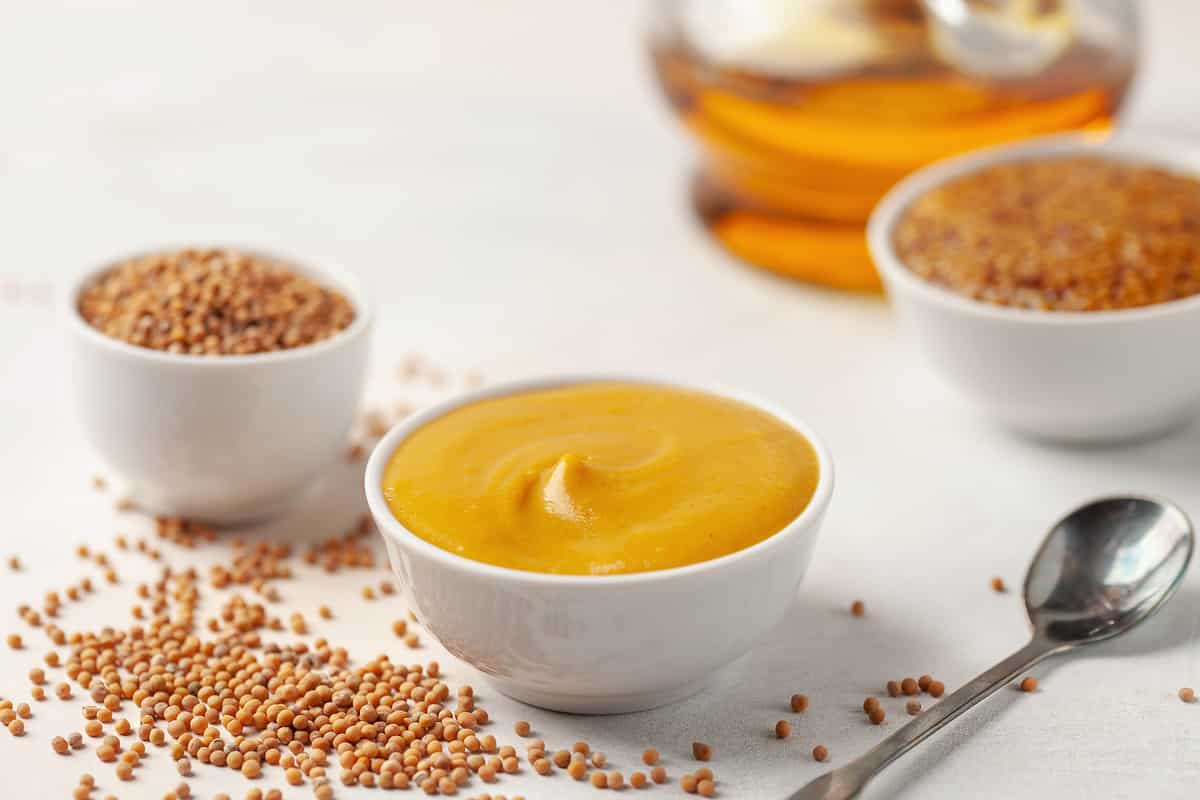
©iStock.com/MurzikNata
How Mustard is Made
Mustard is made by grinding down the seeds of the specific mustard type that is being made. Then comes the vinegar, spices, honey, maple syrup, salt, and sometimes garlic or onion powders. There are a lot of different types of mustard that feature different recipe variations. For instance, yellow mustard includes turmeric which gives it that bright yellow hue while Dijon mustard uses brown mustard seeds and white wine to create the heat of the Dijon and Grey Poupon mustard types. There's Chinese mustard which is very hot and a much milder German mustard commonly paired with pretzels (via Epicurious).
Popular Uses
Mustard as a condiment is a great addition to hot dogs and fried things or mixed in with oils for salad dressings. You can also pair it with mayonnaise as a dipping sauce! The seeds can be ground up and used as their topping for salads and other pastes for fish and other larger meals (try them in mussels, mashed potatoes, or in a combination buttered).
Possible Alternatives To Ketchup or Mustard
Alternatives to ketchup include other tomato-based sauces. Try out salsa, tomato chutneys or James, hot sauce, or fish paste. Mustard can be substituted with mayonnaise for texture and horseradish for the spice flavor. There is also Worcestershire sauce which has both garlic and vinegar in it.
Are Ketchup and Mustard The Same Thing?
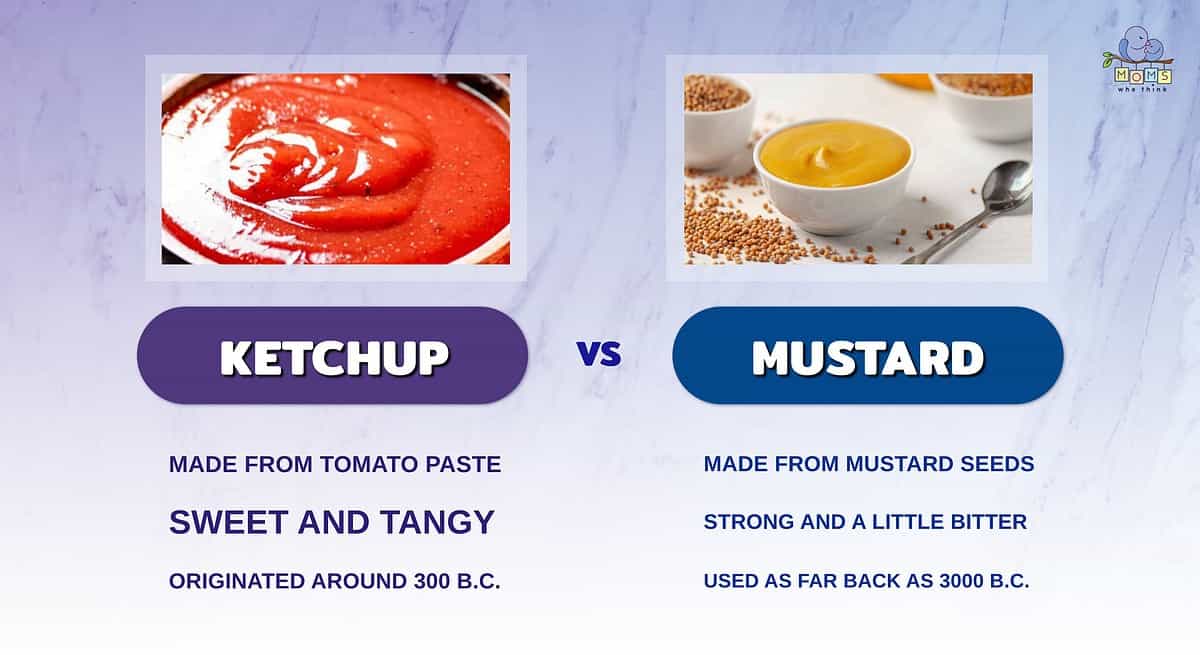
- Ketchup is made from tomato paste, while mustard is made from mustard seeds. They do share some ingredients in common, but this primary difference in ingredients is important.
- Mustard's taste can often be described as strong, with a little bit of bitterness. Meanwhile, ketchup has a sweet and tangy taste.
- Ketchup originated around 300 B.C. Mustard has been around for a lot longer, dating as far back as 3000 B.C.
In the ketchup vs. mustard debate, one thing is certain: ketchup and mustard pack some very different punches in terms of flavoring. Ketchup and mustard do have some ingredient similarities like vinegar, salt, and other spices. They can work well together, but are also great when used on their own. From salad dressings to dipping sauces, ketchup and mustard each bring a unique taste to a meal!
Want to use your mustard in a new recipe? Take a look at this delicious one:
Print
Pork Tenders with Honey Mustard Sauce
Ingredients
1 quart peanut or vegetable oil
1 1/2 cups flour
1 1/2 cups cornstarch
2 teaspoons Lawry’s Seasoned Salt
1 teaspoon ground black pepper (optional)
2 eggs, well beaten
6 Tablespoons milk
3/4 package Chicken in a Biskit crackers, crushed, or other seasoned crackers
8 4-oz boneless center cut pork chops/pork loin slices, tenderized *cut these into 3-4 strips per 4 oz. loin slice, lengthwise
Additional seasoned salt or sea salt for sprinkling post-frying
For the Honey Mustard Dipping Sauce:
2/3 cup honey
3 tbsp yellow mustard
1 tbsp Dijon mustard
Instructions
1. Heat oil to 350 degrees in a large, heavy-bottomed skillet.
2. Combine flour and cornstarch in a large glass baking dish.
3. Add Lawry’s and pepper. In a separate baking dish add beaten eggs and milk, mix together.
4. In a third baking dish, add crushed crackers plus 5 TBSP of flour/cornstarch mixture. Mix well.
5. Dredge each piece of tenderized pork in flour, shake excess.
6. Dip in egg/milk mixture, shake excess.
7. Dredge in cracker crumb mixture.
8. Place on clean plate and repeat with other pieces until complete.
9. When ready to fry, be sure oil is 350 degrees.
10. Fry 4-6 pieces or 1 large piece of meat at a time in 350 degree oil, for 2 minutes and until golden brown. Use a meat thermometer to test doneness, at least 145 degrees.
11. Remove to paper towel lined plate. Serve immediately with honey mustard dipping sauce.
Directions for the Honey Mustard Dipping Sauce:
1. Combine honey and mustard in a bowl. Stir well. Serve at room temperature.
Notes
This is the reason for the 50/50 cornstarch coating in this recipe. When it comes to coating chicken or pork for cooking — particularly for fried — flour is the common go-to, but if you want very crisp, crunchy skin, cornstarch is the better option. Cornstarch is a pure starch often used as a thickening agent for sauces and soups, and is commonly used in Asian cooking for stir-fries. When used to fry chicken or pork , it helps with browning and creates a super crisp crust that seals in the juices of the chicken or pork.
The image featured at the top of this post is ©iStock.com/natapetrovich.


